What’s a Geek Spotlight: Our Favorite LGBTQ Characters
9 out of 10 times, the most fabulous members of a cast – the LBTQ+ characters – don’t get nearly enough loving. To make matters worse, complex/multi-dimensional LGBTQ+ waifus and husbandos are so difficult to find. Some members of our team have decided to bring them front and center. We’d like to show our love for these guys in this article, and tell everyone how much these characters mean to us.
Zii from Menage a 3, Emile
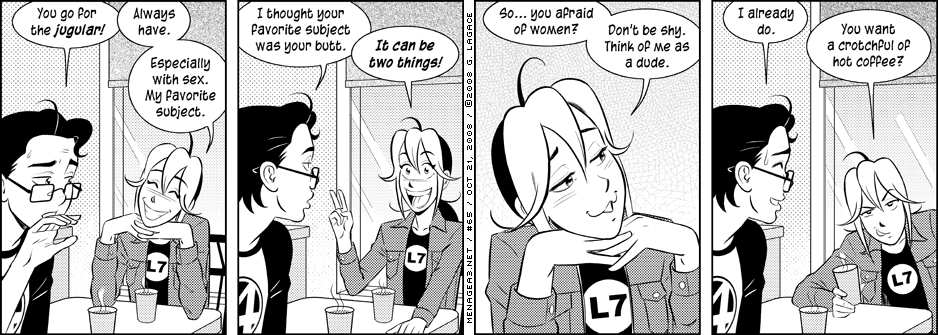
Webcomics are a great source for awesome LGBTQ representation. I’ve written about one of my favorite ones, Claire from Questionable Content. Another character I’d love to shine a spotlight on is Zii from Menage a 3. Zii starts out as the bisexual manic pixie dream girl (MPDG) roommate of co-stars Gary and DiDi. She fits the bill so perfectly and, tied in with her voracious sexual appetite, it can be easily misconstrued that she’s some kind of fantasy girlfriend for lonely straight men. Perhaps she might also be a Mary Sue for repressed women.
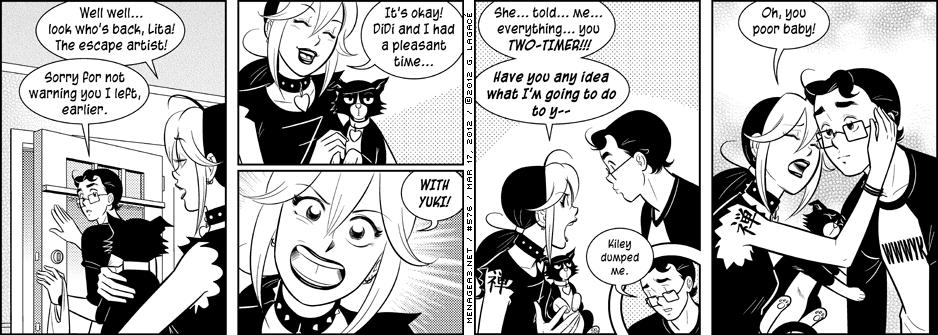
In many ways, she is – at least for the first 100 strips or so. However, the format of webcomics allows for deeper and more nuanced character development. Unlike many of MPDG stereotypes, she does exist independently of other characters. She has her own life and concerns, such as restarting her band career or exacting sweet vengeance against an online troll, as petty as it can be. What’s equally interesting is that her behavior doesn’t go on without consequences. Her decisions have come back to haunt her, from a regretful break-up with her male manager to the unwanted affection of a closet lesbian. She’s a character with her own whims and desires, whether it’s trying to get the painfully, naïve Gary laid with hot women or if it’s trying to film Gary naked with other men. She’s a fujoshi who sneaks away time at the comic book shop to read the latest yaoi. Sometimes, her resolve falters and her desires get the best of her. Like many great characters, she has her ups and downs.
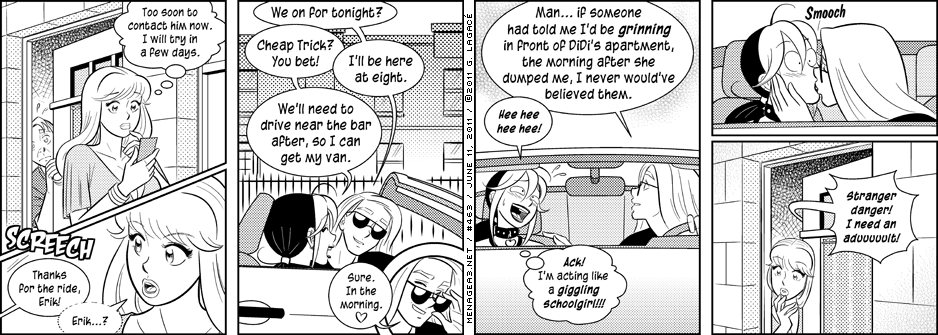
Zii’s sexuality is at the forefront of her personality and she isn’t ashamed of it. Her list of lovers is colorful including a phallo-phobic drummer who sees tentacles where the penis should be. Who she doesn’t date is refreshing as well. For the most part, she never saw her Amazonian goddess and virgin nerd roommates as potential mates. The few times where she was interested, she’d resort to giving herself a cold shower to wash away the thoughts. She knows when it’s great to have wild MMF time together and when it’s probably not a good idea to entertain the desires of a newly single woman. She’s got her sensitive side too. She knows how sexy she is, but can still get hangups over her appearance.
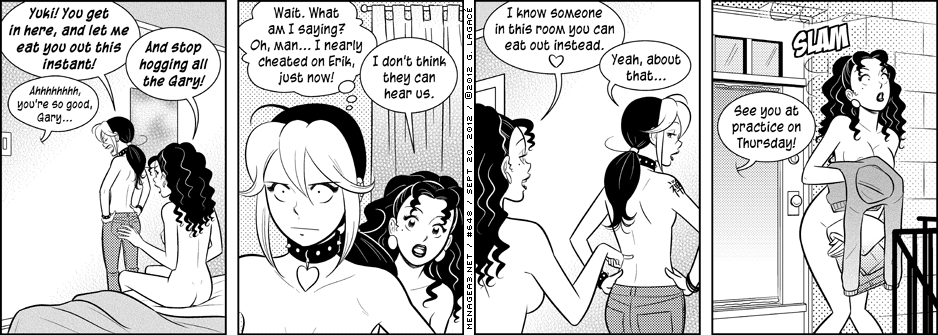
In an age where it’s so easy to have your desires and passions stifled by societal pressure, Zii and the world of Menage a 3 is a great place to imagine the possibilities of life. She’s not free from judgement of her lifestyle and sometimes she’s a jerk, but she is surrounded by people who will always support her. There’s a price to being such a free spirit and, sometimes, she can’t pay it. And that’s okay. That’s the most we can ask for any fictional character – a character who’s both larger than life but grounded enough to be realistic. LGBTQ needs all the great representation it can get and Zii waves her flag proudly.
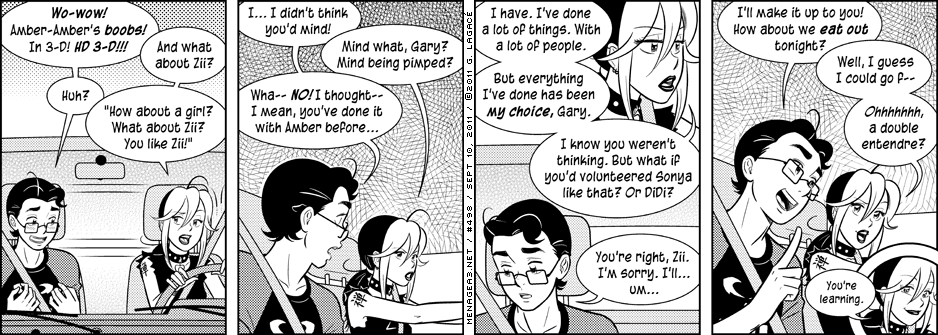
Tara Maclay from Buffy the Vampire Slayer, Miggy
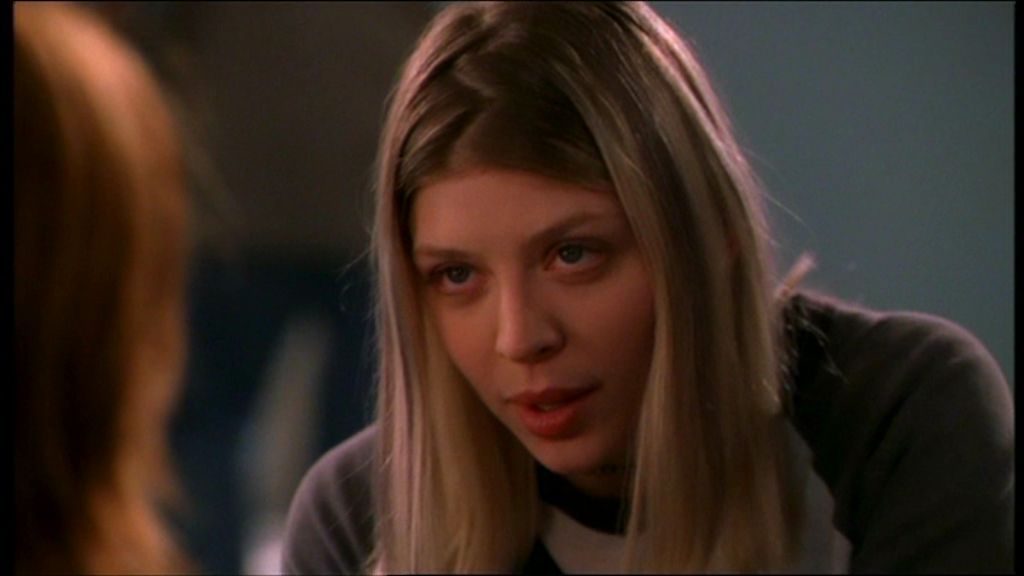
When a lot of us LGBTQ+ folk were growing up, there weren’t many LGBTQ+ characters or couples to look up to. Most LGBTQ+ characters in a narrative of a TV show in the late-90s/early-00s were either one-offs, severely underwritten, or caused a show’s cancellation (see Ellen and the Big Reveal). While the expansion of Buffy the Vampire Slayer beyond the confines of high school was one of the biggest changes, it would be the addition of Amber Benson’s Tara Maclay to the cast that provided the biggest change – outside of Dawn – to the core cast.
Her first appearance as a quiet and unassuming magic practitioner in a wannabe Wicca group that Willow joins is the start of it all. In what was a rather tenuous time for LGBTQ+ characters on TV, she was firmly established as gay, having “come out before freshman year”.
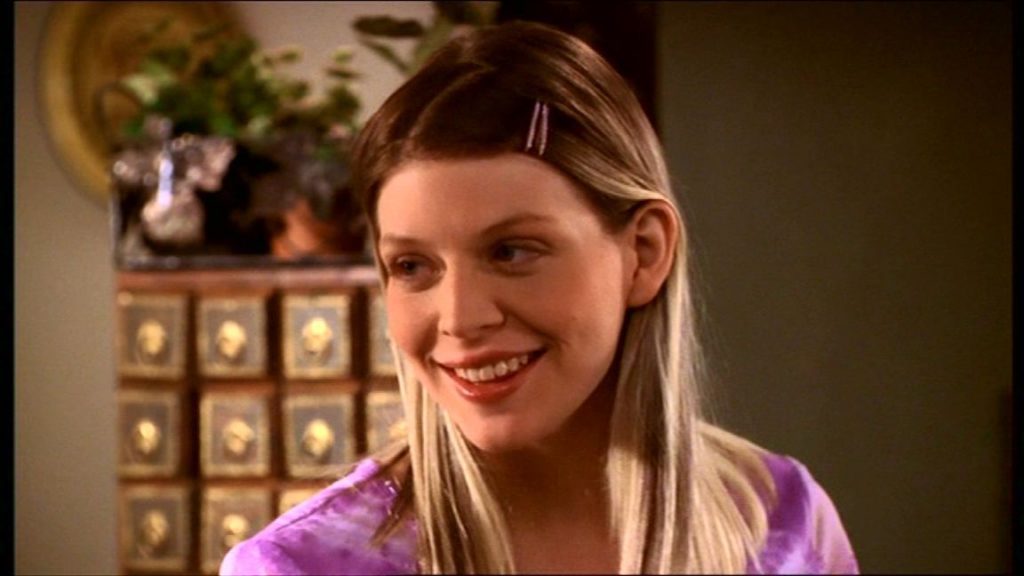
I remember being on the Buffy website a long time ago and seeing their cards as it depicted their respective roles – Willow was The Witch, but Tara was The Sorceress. She was established as more powerful – if less daring – than Willow was when they first met. I remember watching at full attention when they began to unravel her story as a demon because of her magic, something that ran in her family’s maternal line.
The lengths that she went to to in order to hide being a “demon” from her new friends, broke my heart, as did the fact that her belief in her being a monster basically robbed her of self-confidence. It was only later that I realized that her story is an allegory to how most LGBTQ+ kids must feel about themselves when they begin to discover who they really are.
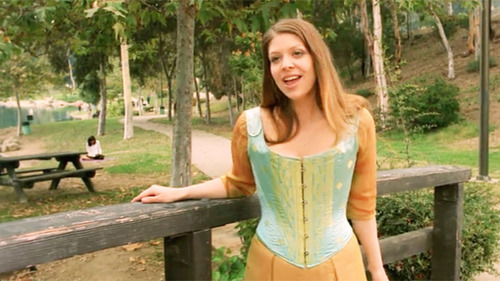
In revealing the fact that the whole demon bloodline magic aspect was a bullshit ruse put up by her father and brothers, Tara lost all reason to hide anything anymore. While still soft-spoken, she was more assertive in her voicing out opinions to the Scoobies, and more confident in her clothing choices. I’d be damned if the imagery wasn’t powerful to me.
Her intertwined story with Willow was also something of great value in teaching people about finding love and keeping it. While she had a hand in Willow’s growth as a Witch, Tara was only partially responsible for her girlfriend’s addiction, and she knew when she’d had enough. It was a hard lesson in learning to let someone go when they’re incapable of seeing all the wrong they’ve done.
The reasons why I love Tara Maclay are innumerable, but none moreso as her and Willow stepping in to care for Dawn after Buffy sacrificed herself to foil Glorificus’ plan. A flashback in the Season Eight comics revealed that she and Willow had thought about leaving Sunnydale with Dawn prior to deciding they needed Buffy back. Her story may have ended with her tragic death at the hands of a mundane weapon, it was never because she was gay – it was a random act of violence by a hateful person, and I’m glad nobody’s tried to bring her back in the comics. It’d defeat the purpose of her character and the lessons she imparted to them – and to me – while she was alive. She was also a fantastic singer, okay.
Cirilla “Ciri” Fiona Elen Riannon from the Witcher Series/Witcher 3: The Wild Hunt, Pam
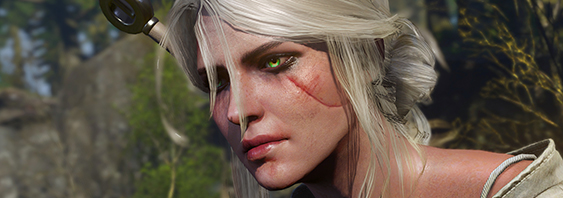
Stop me if you’ve heard this before, but: LGBTQ+ characters in video games are rare creatures, and take the cake for being the hardest to find in comparison to comics, film, and animated shows. When they DO come around, they tend to be oversexualized, a little too stereotypical, or are side characters. My pick for this article is not oversexualized, not typical, and definitely NOT a side character.
Ciri is the adopted daughter of Geralt of Rivia, my personal pick for 2015’s Dad of the Year Awards in the Video Games Category. She is Geralt and Yennefer’s raison d’etre since the Witcher novels, the only other playable character in Witcher 3: The Wild Hunt, and the time and space-manipulating Lady of Worlds.
If that doesn’t make her a Magical Girl of the finest kind, I don’t know what does.
Everyone’s first introduction with Ciri is in the prologue/tutorial sequence of the game, where Geralt dreams of a beautiful day in Kaer Morhen. She’s the fierce lil witcher girl in training who clearly idolizes her father figure, and shows her love for her other papan witchers by being difficult as high hell. It’s representative of some of Geralt’s fondest memories of her, in a time before everything started falling apart. Because of her ancestry, Ciri has been hounded by various political groups who wish to use her in your typical Game of Thrones fashion (read: marry, have children by, dispose of when she becomes a threat). The powers that her bloodline possesses also makes the Wild Hunt – the main antagonists in the series – want her for themselves.
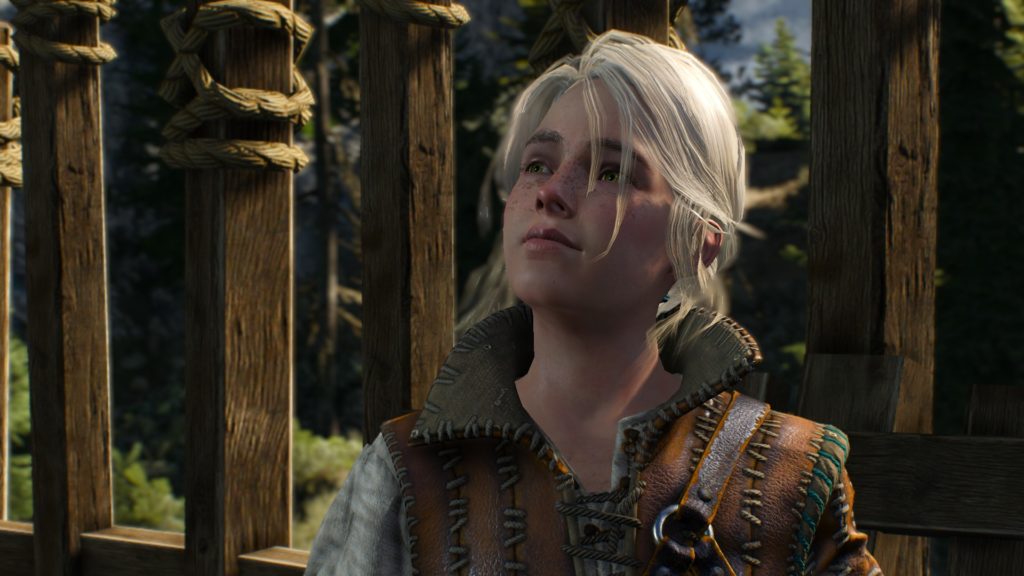
The next time you encounter Ciri in the game, she’s the full-grown woman of the current timeline, and a playable character. Players will get to see the other half of the narrative through her eyes, and see for themselves why Geralt is ready to fight the world in order to keep her safe. In that same way, however, you’ll ALSO get to see that Ciri is no longer the tiny babbin that needed an army of witchers plus two sorceresses to raise. She’s perfectly capable of standing on her own two feet, and tries her damned best to protect the people she loves in spite of the fact that she’s facing seemingly impossible odds. And it isn’t as if she falls into the trap of “strong” female characters either. Her moments of vulnerability and feeling of helplessness are as real as Geralt’s building worry and frustration over constantly just missing her daughter on the Path.
There is already a hell lot of satisfaction to be found in reuniting Geralt with Ciri if you’re just coming from the video games, so you can only imagine how it must feel for players who have read the fan-translated novels (Spoilers: it made many of us curl up into incoherent balls of Feelings). Witcher 3 makes it a point to give you lots of opportunities to run around with your surrogate daughter. As my fellow Witcher fan Michael Dizon put it, the game excels at making you remember why you were willing to travel to the ends of the earth, assassinate kings, and kill thousands of Nekkers for Ciri.
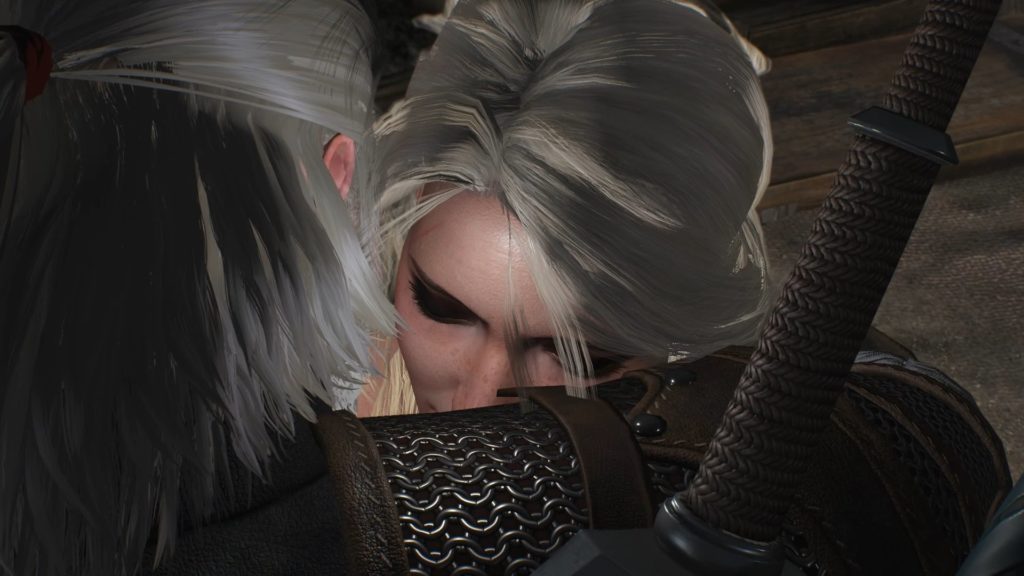
At this point, people who have played the Witcher video games (or even just Witcher 3) might be wondering how Ciri counts as queer. Players only get the barest hints of this throughout the game, and they come in the form of choices that players themselves have to make, thus shifting the narrative in directions that they choose. The truth of the matter is, Ciri’s sexuality in the novels, not in Witcher 3. The game chooses to focus, instead, on the resolution of the main plot of the Witcher universe as a whole, where – through your actions as player – you can finally bring an end to Geralt’s story with Ciri. Whether it’s a happy ending or not is up to you.
I have no problems with this whatsoever. Ciri comes into the narrative as her own person, a human being with a story to tell. Nothing in her actions or dialogue reek of the CD Projekt Red’s team trying to give you a token LGBTQ+ character. No one in the universe, including Ciri herself, becomes a mouth piece for LGBTQ+ Rights 101. Ciri, like other queer characters in the Witcher series, simply exist. Beyond the “loud and proud” LGBTQ+ characters who through their dialogue or their choices are walking studies in what it means to be queer, we also need characters that just are, in universes where most people will simply nod at the big revelation of their sexuality and carry right on. We also need more queer characters who are front and center instead of being plot devices, and figure in stories that AREN’T romances or extended explorations of the great mystery that is their sexuality. Here’s hoping that we see more queer representation like this Ciri, where the end game doesn’t have to involve them getting killed off in pursuit of the plot.
Felix Dawkins from Orphan Black, Nicole
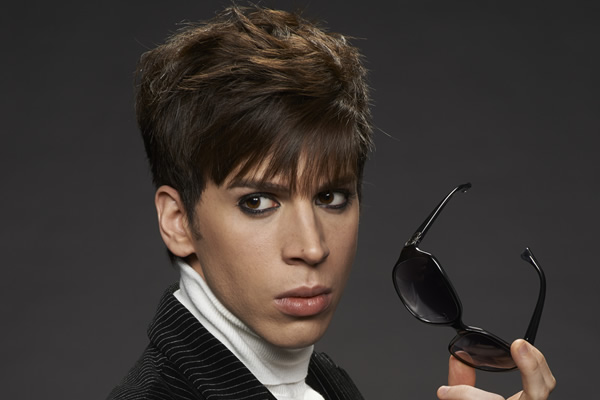
Orphan Black is a show that, for the past four years, has been praised for its treatment of women, the LGBTQ community, and great character writing. From the individuality of each character Tatiana Maslany has to play to their supporting characters, no one is totally left out and given every bit of time to shine.
Here we have Felix Dawkins, the long-suffering, loyal, sharp-tongued, and more than once an amazing brother to our protagonist Sarah Manning. He’s her brother by all rights but by blood, and it hasn’t stopped them. For every scheme Sarah had before she realized she was a clone, Felix has got her back, kept her safe, and has never faltered in his love for his sestra. He hid her drugs, helped her fake her own death all the way to staging a funeral, and has taken care of her daughter Kira. What’s NOT to love about Felix?
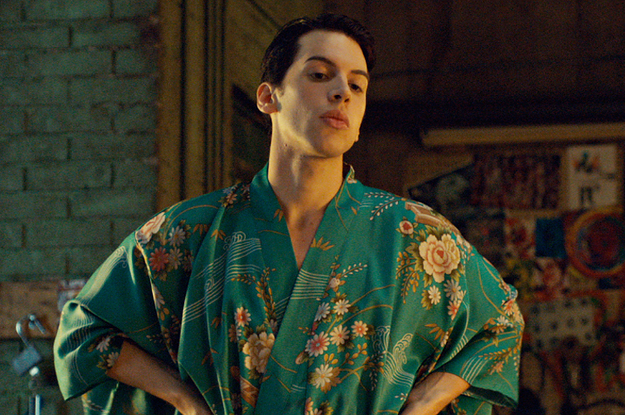
The showrunners also have made no secret of his sexuality from the get go, and revels in his portrayal as an artist, rent-boy (for monies), and voice of reason in this show. I can’t get enough of how Jordan Gavaris doesn’t shy away from what may be considered a gay stereotype and just rolls with it, only to show the audience that he’s more than what the stereotype is. So his character is gay and fabulous with a punk rock sense of fashion, but then he’s also a kick-ass schemer, actor, brother, uncle, son, and friend. He grounds the family and the story amidst all the sci-fi chaos the show throws at as, and I am thankful for his presence in every scene he’s in.
His being gay is also used in humorous plot points, yet it’s done with a certain amount of respect that the writers sometimes subvert the stereotype. At one point he has to pretend he’s in gay relationship with a straight man just to register for an experimental pregnancy treatment with a surrogate. He plays himself, but his fake partner in this, Donnie, suddenly starts acting femme to fill the role as a gay partner. Felix quickly calls him out on it, that just because you’re gay it doesn’t mean you have to fit the box. Gay means you’re as you as you are, and that being femme isn’t all what being gay is. It’s small lesson in over assumption, and he drives it home quite well.
With the final season of Orphan Black confirmed for next year, I surely hope they keep up their great characterization of Felix. He’s a light amidst a progressively bleaker and bleaker show, and is always a delight when he comes on screen, lipstick, sarcasm and all.
Makoto Ariga from Hourou Musuko, Abdul
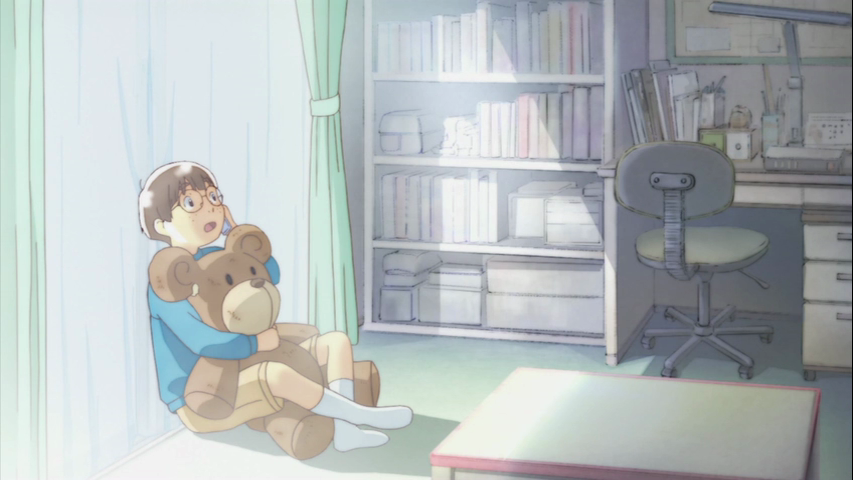
Wandering Son is a twelve-episode anime adaptation of Takako Shimura’s 15-volume manga of the same name. It is about Shuichi Nitori, a boy who wants to be a girl, and Yoshino Takatsuki, a girl who wants to be a boy. They form a deep bond of friendship, become the points in a puppy love triangle, and struggle to express their gender identities. It is an amazingly poignant and thoughtful anime about growing up trans, and I love all of the kids here. My favorite is a character in the trans kids’ orbit: Makoto Ariga, Shuichi’s best friend and the show’s precious freckled creampuff.
Makoto Ariga’s importance in the anime lies on how he contrasts with Shuichi, which is also how he becomes a new take on the gay bestfriend trope. He isn’t flamboyant, but he does wish he had Shuichi’s guts to wear girl’s clothes in public. He isn’t a source of cheap laughs and funny advice, but whatever he says does inform Shuichi’s thoughts and choices.
Their friendship shines best when the anime shows how a lesbian trans girl and a gay boy can find common ground, and how they can support each other. When Shuichi can no longer talk to his old friends, Makoto becomes his safe haven. When Shuichi is confronted with the question of whether she likes boys, this also starts Makoto to question his sexual orientation. “Am I attracted to boys?” he asks, heart cracked open wide for the question’s many implications.
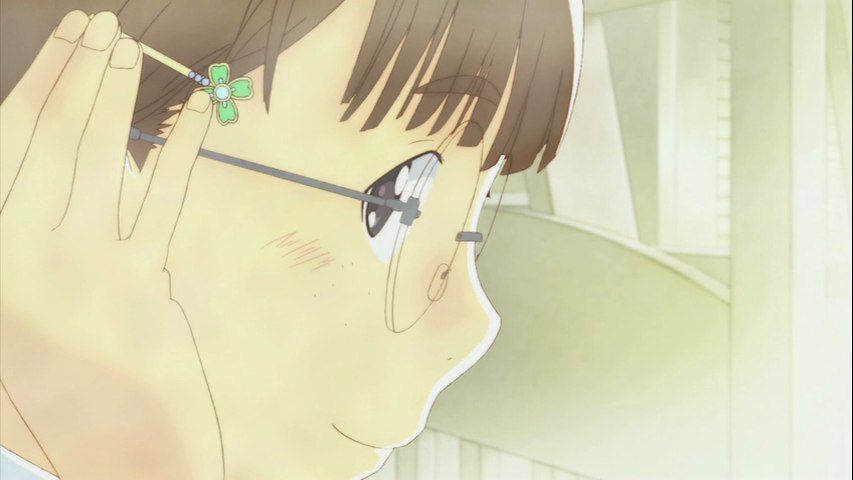
Another fascinating dimension of their friendship is Makoto’s perceived lower status for not looking enough like a girl like Shuichi. Unlike Shuichi, he cannot pull off dressing in skirts, and his freckles get in the way of his belief of what it means to be pretty. In a way, Shuichi is Makoto’s idol, and in a way, Makoto is an underdog. (An interesting set-up, considering that in contemporary society, trans people are more disenfranchised than cisgendered gays. It is refreshing that the trans girl finally has the upper hand.) It is this continuous process of yearning to be more that endears me to Makoto to the degree that no other representation of queer children in film, television, or books ever can.
While the anime remains superior to the manga, in large part because it focused on a smaller period of the characters’ lives, the manga drives the point home that sexual orientation and gender identity is fluid. Makoto’s characterization changes significantly in the later parts of the manga.
SPOILER ALERT: I am happy to report that, in the end, Makoto realizes she is, and comes out as, a trans woman.




